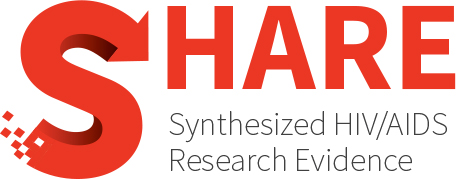Adherence to antiretroviral therapy and its associated factors among children living with HIV in Eastern and Southern Africa: A systematic review and meta-analysis
Abstract
Background: Children living with HIV in low-income settings, such as in Eastern and Southern Africa, are at a high risk for poor adherence to antiretroviral therapy. However, various primary studies presented inconsistent and inconclusive estimates of adherence and its associated factors among children living with HIV in Eastern and Southern Africa. Therefore, we were aimed to determine the pooled prevalence of adherence and its associated factors, and to guide interventions efforts to support adherence, this comprehensive systematic review and meta-analysis was conducted.
Methods: We have comprehensively searched PubMed, Google Scholar, EMBASE, Scopus, and Hinari databases for all primary studies. Unpublished studies were also searched manually and accessed from university repositories. Additional searches were conducted by examining the references in the included articles to further identify relevant studies. Data were extracted and analyzed using Microsoft Excel spreadsheet and STATA version 17 software, respectively. A random-effects DerSimonian-Laird model was used to compute the pooled prevalence of adherence to antiretroviral therapy among children living in Eastern and Southern Africa. We have used Cochran’s Q test (χ2) and Higgins I2 statistics to identify heterogeneity. Subgroup and sensitivity analysis were conducted to investigate the potential sources of heterogeneity. Publication bias was assessed by the funnel plot and Egger’s test. An association was expressed through the pooled adjusted odds ratio and statistical significance was considered at a p-value < 0.05.
Results: This meta-analysis combined the effect estimates of 29 primary studies with 7414 study participants. The pooled prevalence of adherence to antiretroviral therapy among children living in Eastern and Southern Africa was 76.2% (95% CI: 71.4, 81.1) [I2 = 97.06%, P < 0.001 and Q test (χ2) = 953.83, p-value < 0.001]. Being a biological caregiver [AOR = 1.93 (95% CI: 1.34, 2.73)], receiving first-line antiretroviral treatment [AOR = 2.7 (95% CI: 1.39, 5.25)], and having social support [AOR = 1.88 (95% CI: 1.33, 2.66)] were significantly associated with adherence to antiretroviral therapy.
Conclusion: The pooled prevalence of adherence to antiretroviral therapy among children living with HIV is low. Biological caregiver, first-line antiretroviral treatment, and social support were factors associated with adherence to ART among children living with HIV. Therefore, healthcare providers, adherence counselors, supporters, as well as governmental and non-governmental organizations, should emphasize a multi-component intervention approach to address the multifaceted challenges associated with adherence to ART, thereby improving counseling efforts to enhance adherence. Moreover, clinicians should prioritize the selection and utilization of regimens for individuals in this age group on robust first-line options.
Authors
Alemu GG, Yirsaw BG, Tesfie TK, Yismaw GA, Abuhay HW, Alemayehu MA, Agimas MC, Derseh NM
Year
2025
Topics
- Epidemiology and Determinants of Health
- Determinants of Health
- Determinants of Health
- Social support
- Health services
- Population(s)
- Children or Youth (less than 18 years old)
- Prevention, Engagement and Care Cascade
- Engagement and Care Cascade
- Engagement and Care Cascade
- Linkage/engagement in care
- Retention in care
- Treatment
- Health Systems
- Governance arrangements
- Delivery arrangements
